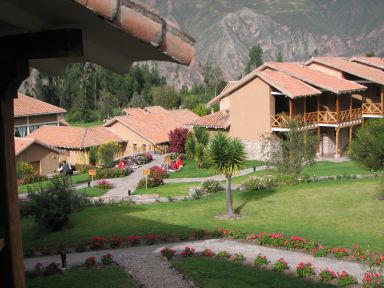
2011-04-23: Casa Andina
Our home base here in the Sacred Valley was Casa Andina. It was here that Tryna had her first treatment of oxygen because her blood oxygen went very low due to the high altitude.
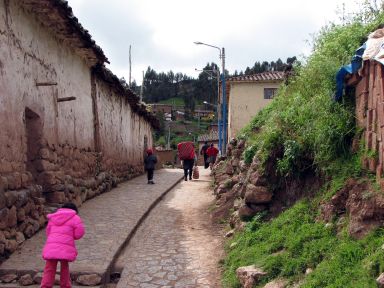
2011-04-23: Chincheros
Perched high in the Peruvian Andes on the Inca road between Cusco and Machu Picchu, Chincheros was an early Inca center built by emperor Tupa Inca as his country estate. During Inca reign, textiles were woven and offered to mark special occasions, from peace treaties and sacrifices to marriage ceremonies and puberty rites.

2011-04-23: Spinners
In Chincheros, children grow up playing with their mother's spindle and loom. By age six or seven, most children learn to weave by watching their elders. They begin by weaving jakimas, or narrow ribbons, before moving on to more complicated pieces.
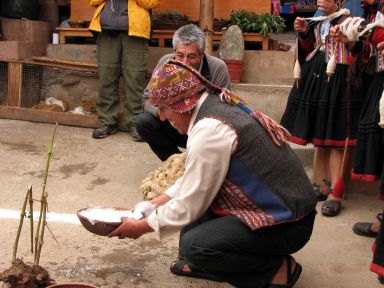
2011-04-23: Wool Cleaning
We visited a co-op today where we saw the whole process of weaving demonstrated. To wash the wool, they shaved the root of plant much like a yucca into water and suds appeared. Just dipping the dirty brownish wool in and out of the solution, turned it into a snow white color.
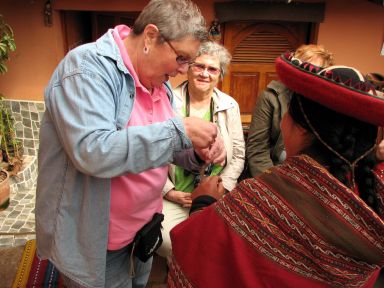
2011-04-23: Spinning
Tryna found out it wasn't as easy to hand-spin as the locals made it look!

2011-04-23: Dyes
All of the colors of the wool is derived from natural materials. The purple shown here is from purple corn, one of the many species of corn raised in the area.

2011-04-23: Red Color
The red was from a bug that feeds on cactus.

2011-04-23: Loom
The looms are portable since much of the weaving is done in the fields while tending the animals. Here we are getting a demonstration of the use of this loom - all of the patterns were in the weaver's head!
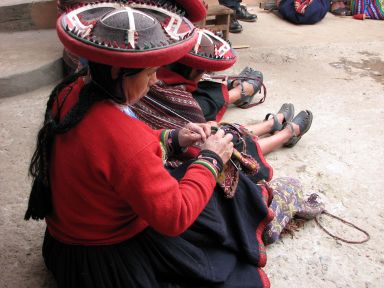
2011-04-23: Knit
This gal was knitting a pair of socks using 6 short needles.
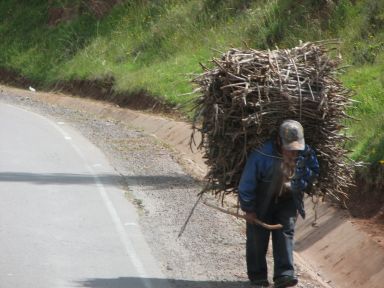
2011-04-23: Transportation
As we traveled to our next destination, we saw this man carrying this load of sticks on his back. We assume that he is going to use them for a thatch roof.
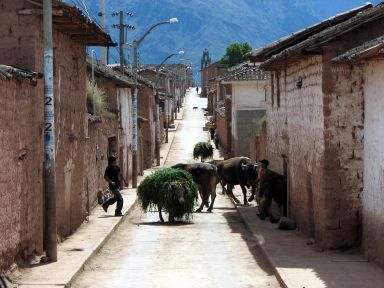
2011-04-23: Barn
Driving this narrow street it looked like we were going to collide with these cows until they turned left and entered a door in the wall that turned out to be the door to their courtyard barn! Al was sure glad he wasn't driving these narrow roads!
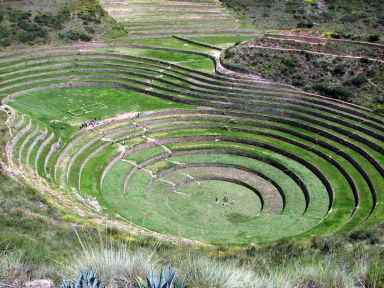
2011-04-23: Moray
Moray is an archaeological site on a high plateau at about 11,500 feet west of the village of Maras. It contains unusual Inca ruins mostly consisting of several enormous terraced circular depressions, the largest of which is about 98 ft deep. The purpose of these depressions is uncertain, but their depth and orientation with respect to wind and sun creates a temperature difference of as much as 27 °F between the top and bottom. This large temperature difference was possibly used by the Inca to study the effects of different climatic conditions on crops. In other words, Moray was perhaps an Inca agricultural experiment station. As with many other Inca sites, it also has a sophisticated irrigation system.
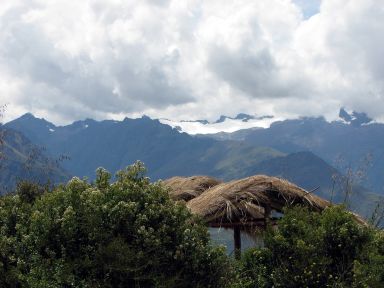
2011-04-23: Glacier
As we got higher we were able to see several beautiful glaciers. Our guide did tell us that they were shrinking.
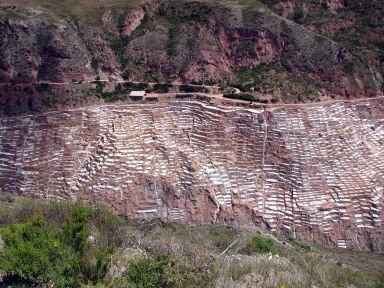
2011-04-23: Salt Pans
The Salinas de Maras have been used since the times of the Tahuantinsuyo culture and continue to be an important source of family-based industry in the Sacred Valley today. Here, salt water bubbles from the Qoripujio spring and is channeled to shallow man-made pools. Exposed to the sun, the water evaporates and the salt remains on the surface and is then collected to be sold in the market. There are over 3,000 pools crammed into this hanging valley.
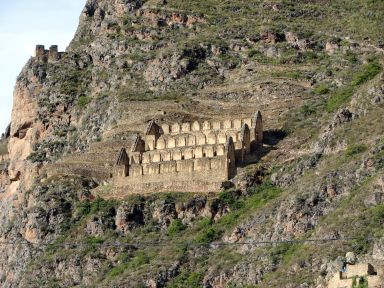
2011-04-23: Ollantaytambor Ruins
During the Inca Empire, Ollantaytambo was the royal estate of Emperor Pachacuti who conquered the region, and built the town as well as a ceremonial center. At the time of the Spanish conquest of Peru, it served as a stronghold for Manco Inca Yupanqui, leader of the Inca resistance.
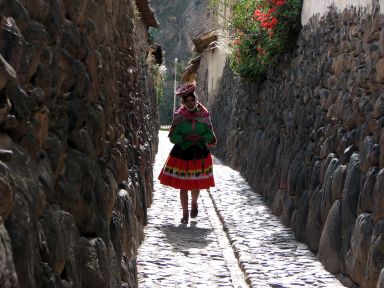
2011-04-23: Village
Walking through the village we were able to see many people dressed in native dress.